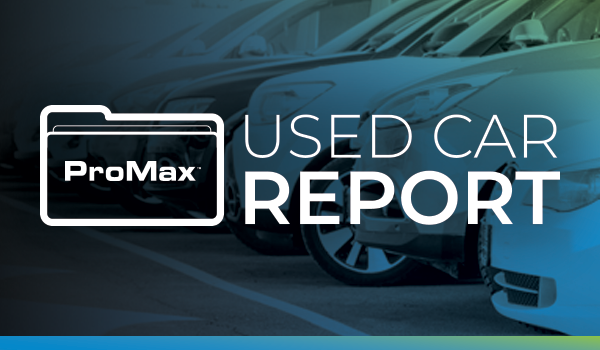building%20a%20CRM%20image.png?width=2100&height=1108&name=5%20Reasons%20Why%20(Re)building%20a%20CRM%20image.png)
Have you ever noticed that the major CRMs in automotive have a stranglehold on the market and are doing so with, at this point, legacy software and technology? Now that we are about 20+ years since the introduction of CRMs in the dealer body, you must wonder why either no one else has come out with a CRM that has been able to gain significant market share or why the big-3 haven't rebuilt their platform in any significant way? Because rebuilding an automotive CRM is difficult; actually, it is damn near impossible to pull off. In fact, there have been countless companies that have made efforts only to see those efforts fall off and be put back on the shelf.
That said, it leaves many dealerships--at least the ones we speak to--feeling like they are stuck with choosing between the lesser of all evils. Which is a critical issue, especially considering all the change that is currently happening in our industry. Dealerships should feel absolutely confident in the CRM they are using and how it supports their strategy in serving their customers today and tomorrow.
In part one of this two-part series, we will walk through why it is so challenging to (re)build a CRM in automotive--and why there isn't anyone doing it. In part two, we will discuss why ProMax felt like it had no other choice but to bite the bullet and rebuild—for automotive’s sake.
CLICK HERE to get a first-hand look at Automotive’s Newest CRM Platform Powered By ProMax!
Here are 5 reasons why (re)building a CRM is so damn difficult:
1. An “if it ain't broke, then don't fix it” mentalityThis is where dreams of a better future go to die... Convincing internal stakeholders to move forward with rebuilding a CRM is often times met with apathy and an 'if it ain't broke..' mentality. Now, this mentality doesn't lie in the product itself because I guarantee you in board rooms across the CRM category, there are discussions being had over whether they can sustain the existing platform. What I am referencing is if the revenue is there, then don't fix it.
If good money is coming in, and often legacy platforms have the best money, because after all they aren't reinvesting significant money in the system--so those grosses are looking great! Then why would we upset the apple cart to build a new platform. In many [all] cases, this is where the discussion ends only to be brought up and killed off again in 12 months. It becomes a vicious cycle of all talk and no action.
2. A mountain of features and requirements from dealers and OEMsSo, let's just say you are one of the few companies who navigated through the first challenge--congratulations! You have now entered the space of an infinite list of features and requirements.
For folks that have been in the industry for any amount of time, one thing rings particularly true: every dealership or group, although all selling largely the same product, have each figured out a different way to be successful within their market. You could say that dealers are like fingerprints in the fact that they are all unique in their approach. And, in every case, they are proud of how they've been able to differentiate themselves through process--as they should be. The automotive dealer body is the embodiment of entrepreneurial spirit and ingenuity that makes our country great—although sometimes that gets overlooked (a different topic for a different article.)
However, for a dealer's partners--particularly for something as critical as a CRM--the challenge has always been to accommodate all the ways that make their dealers unique--which has naturally led to an endless supply of one-off features, processes, and settings that have been developed over the course of 15+ years of doing business with dealers.
To make matters worse, many of these features were developed during a time when the CRM category was still in its infancy--meaning, a vast majority of those 'nice to have features' are now non-starters to making a CRM, giving anyone trying to accomplish this the disadvantage of not being able to grow with their dealers. You better have all these things before you launch or you are doomed.
That being said, consider the lift of taking all of those customizations, analyzing each one, and figuring out if there is a way to make that feature even better (because that is why you are building a new platform after all)--this alone can take months and at this point, you haven't even written a line of code yet. Oof, that is enough to drive even the best of organizations insane.
3. It's a major financial and resource investmentWhich leads us to our next point- accomplishing something of this magnitude takes a tremendous amount of financial and human capital, for one primary reason: the development of a CRM takes FORREEVVERRR. In our experience, it'll take no less than 18 months to get to a foundational place to feel confident in launching the product into the market.
And we aren't talking about a casual jaunt for 18 months, this is an 18-month marathon sprint--an all hands-on deck type of build process, which obviously has a very large cost associated with it to be able to pull off, not to mention a cultural change within your company. If you haven’t had to grind this hard in years--as is the case with many of the legacy platforms in automotive--it requires a much different skillset. One that is very difficult to reignite within a culture, but if you do—man, watch out!
4. The need to support multiple platformsI once heard a seasoned CTO reference the idea rebuilding a CRM as, 'rebuilding the plane mid-flight,' which is something that has always stuck with us. Regardless of how many dealers are on the legacy platform, if the decision is made to rebuild/modernize a platform--with it comes the stark realization that you will have to support the existing platform and the dealers leveraging it, while you are rebuilding the new. In essence, you are creating two separate BUs within your company, juggling your resources to keep the plane in flight, while rebuilding it at the same time.
Additionally, you run the very real risk of catastrophic failure of your legacy platform as you start unplugging and moving around things to help support the new. All of this can be crippling to an organization because of challenge number one, which is decisions that can impact short term revenue aren’t taken lightly.
5. Retraining your employees and relaunching your dealersSo, you’ve built a serviceable v1 of the platform; it took 18 months, several million dollars, and countless moments of ‘why the hell did we decide to do this?’... now what? Well, now you have the distinct pleasure of retraining your entire staff on this new platform, rewriting 20 years of training guides, how-to videos, WalkMe popups—we can keep going but you get the idea.
In addition to that, you have the heavy lift of retraining and relaunching the stores currently on the legacy platform as you begin sunsetting the old to make way for the new. If you consider even the fastest growing CRM companies of the past, their Implementation and Support teams were launching 20-30 rooftops a month. These same teams are now being asked to relaunch what could be 1000s dealers on the new platform—which from experience is only slightly easier and labor intensive than launching a new store—in addition to new rooftops signing up for the new platform. It is a balancing act that again take months, possibly years, to navigate.
Through these 5 challenges we have navigated through several years of a treacherous path to pull a CRM rebuild off, and frankly this only scratches the surface of the complexity of rebuilding something as large as an automotive CRM platform. Is there any question that there is a need for a revamp in a category as important to dealers as the CRM? Certainly not, but simply recognizing that there is a need for modern technology is only the start of a ‘bet the future of the company,’ pushing all your chips in type decision—certainly not for the faint of heart. Which is precisely why you aren’t seeing any of the vendors in this space doing it. Until now… (cliffhanger!)
CLICK HERE to get a first-hand look at Automotive’s Newest CRM Platform Powered By ProMax!
Stay tuned for the next article:
"5 Reasons Why ProMax Believes We HAD to Rebuild our CRM Platform"
"


